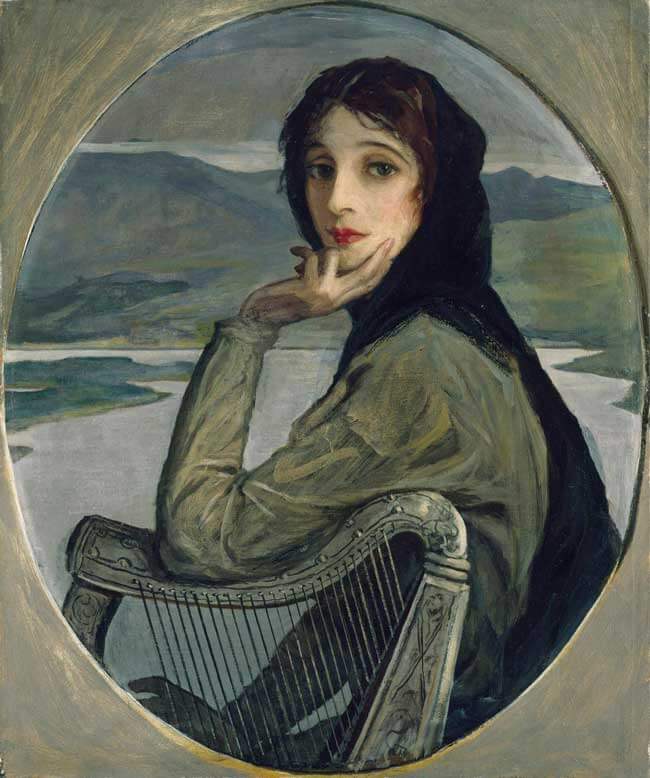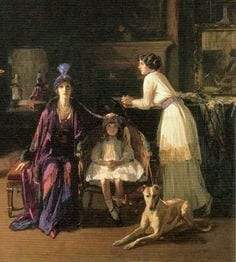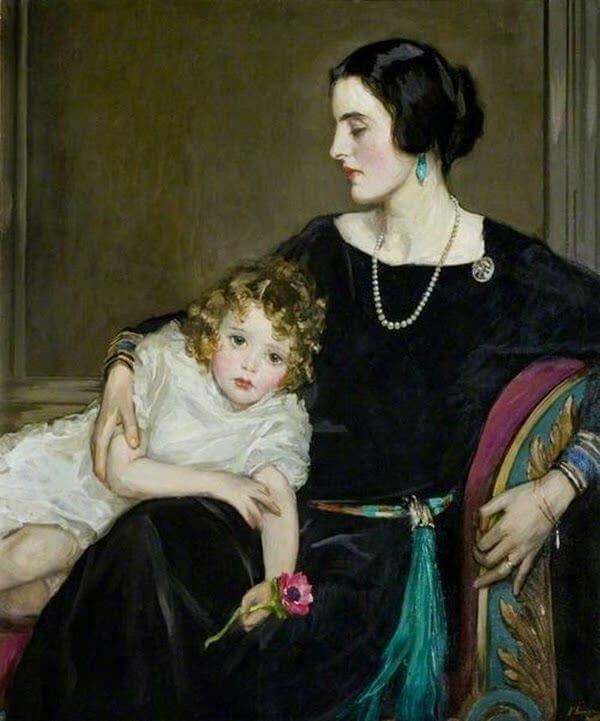Emily Boyle
Belfast, Northern Ireland

Tuberculosis, (TB) is often regarded as a historical disease—in the 1880’s it caused a quarter of all deaths in the UK. Mortality rates from TB fell by 17% between 2005 and 2015,1 but it remains an important health concern. Worldwide it is still the second most common cause of death from an infectious disease.2 In 2016 there were ten million cases of active TB, which resulted in 1.4 million deaths, although more than 95% of deaths occurred in developing countries.3 Recent factors that may account for this include the spread of HIV, as TB typically reactivates in those who are immunocompromised, and the emergence of multi-drug resistant TB. Most often affecting the lungs, the classic symptoms of TB include weight loss, hemoptysis, fevers, and night sweats.4 Other symptoms depend on the organs affected, however most cases are latent with no symptoms.5
The mycobacterium causing TB was identified by Robert Koch in 1882.6 Prior to this there was some sense of the mechanics of transmission, although some theories were rather less scientific. There was even a belief in the nineteenth century that linked TB sufferers with vampires. It was commonly the case that several family members would succumb to the disease because of its infective nature and latency period. One example is the case of the Brontë family, where all six children including the famous authors Emily, Charlotte, and Anne died of the disease. As an explanation for multiple deaths some cultures believed that the first TB victim in a family would return as a vampire and prey on the remaining family members until they too succumbed.7 This belief was especially common in nineteenth-century New England, and occasionally TB sufferers’ bodies were exhumed for evidence.8 The physical appearance of those afflicted with TB may have helped to fuel this theory as victims often had pale skin, low body temperature, and blood stained sputum. Historically TB was commonly known as the consumption, due to the weight loss often associated with it. It has also been known by other names over the years—“phthisis” in Greek times and the “Great White Plague.”

TB is also notable for its association with the literary and artistic worlds.9,10 Perhaps the most straightforward explanation for this was its high prevalence. Many well-known artists, poets, authors, and musicians seem to have either had the disease or to be intimately familiar with it such as John Keats, Percy Bysshe Shelley, Edgar Allen Poe, Frederic Chopin, Charlotte Brontë, Fyodor Dostoevsky, W. Somerset Maugham, and Robert Louis Stevenson. Therefore it is depicted in or influences a huge number of artistic works. In his 1966 article “Tuberculosis and the Creative Writer” John Wilson argues that “all art is forged out of human experience, and pulmonary tuberculosis is one of the deepest and most testing experiences that a man [or woman] can undergo.”9 Before TB became better understood by science it was often associated with artistic and poetic qualities, almost as though these were partly conferred by the disease itself.9-12 The portrayal of TB may be most prominent in the novel as an art form—literature has made abundant use of consumptive heroines.10,12 Opera also frequently draws on consumption for its melodramatic and tragic librettos. Two famous examples are Mimi from La Bohème and Violetta from La Traviata—both young, beautiful heroines who die tragically from consumption in the last act of their respective operas. Luckily for the audience, their struggles with TB do not seem to affect the quality of their singing.
TB is also represented in fine art. More realistic and medicinal portrayals of the effects of the disease were often lacking and victims were portrayed with a beautiful although deathly pallor. Tragic deaths were common and many works depict grieving relatives, such as in the painting by Edvard Munch, which shows his sister Sophie who died of consumption when he was only fourteen13 (Figure 1). TB would feature in many of his other works. Munch had TB as a child and his mother also died of the disease. Another example is the atmospheric painting by Monet of his wife Camille on her deathbed, where it is difficult to say if she has already succumbed or is in the last throes of the disease.
TB was to figure prominently in the life of the Irish painter Sir John Lavery. While he is perhaps not known for depicting it in his paintings, TB had an impact on much of his output in a less direct way. Lavery was a prolific painter who was born in Belfast in 1856 and orphaned at a young age.14 He spent some time with relatives in Scotland and commenced his art training in the Haldane Academy in Glasgow,14,15 also spending time in London and Paris. He became a successful and prolific painter in addition to being a prominent figure in Irish cultural and political life. Although he painted many landscapes at the beginning of his career, he would become well known for his wartime paintings and portraits.

He married his first wife Kathleen McDermott in 1898. In his autobiography, he describes first seeing her in the street selling flowers in London and being instantly smitten – “I was so struck by her extraordinary beauty that I turned back and asked her to let me paint her.”16 Kathleen, who was only seventeen when they first met, agreed to pose for him and traveled to Glasgow. Their relationship developed as they spent more time together. However, she soon developed a persistent cough. She spent some time with family in Wales as the winter climate was felt to be less harsh, and such a period of convalescence was often thought to benefit those with TB. She soon returned to Glasgow and married Lavery but her health did not improve. She gave birth to their daughter Eileen at nineteen but never fully recovered. Despite travelling to different health resorts and constant nursing care, she died from TB a year later.16 Kathleen is depicted in many of Lavery’s paintings, one famous example being An Irish Girl (although it was later discovered that her background was more likely Welsh).
John Lavery was devastated. He threw himself into work and traveled widely after her death, and initially relied on friends to help raise his daughter Eileen.16 He did go on to remarry eight years later after meeting Hazel Martin, who at that stage was a well-known American artist and socialite, famous for her exotic good looks, sociability, and intelligence. She would go on to be his muse in life and art. She sat for over 400 of his paintings, both as herself and also serving as the model for portraits of other people.17 Perhaps most enduringly, her likeness appeared on the Irish bank note from 1928 to 2002, initially as a picture, then a watermark—Lavery was commissioned to paint the female representation of Ireland and used Hazel, his most important model (Figure 2). Lavery painted Hazel in many different settings but a constant feature was her delicate and enduring beauty. Many of his famous paintings would likely never have existed had he not married Hazel after Kathleen’s untimely and tragic death.

Sadly, this was not the only time TB would affect Lavery’s life. His daughter Eileen also modelled for many of his works. One of his most famous paintings is The Artist’s Studio. In a subtle homage to Velasquez’s work Las Meninas, Lavery has shown Hazel, her stepdaughter Eileen, and her own daughter Alice all together in his London studio (Figure 3). Eileen was briefly married to James Dickinson, but he died in the First World War. She went on to marry Lord Forbes-Sempill in 1919.18 He was a pilot, and Eileen became involved in aviation herself and often accompanied her husband on air tours in his airplane. In 1926 for example she assisted him in flying an aircraft to Baldonnell.19 The couple had two daughters, Anne Moira and June Mary. She appears in a painting with her daughter Anne Moira from 1923 (Figure 4). Unfortunately she would never see her children become adults. Eileen contracted TB and after an illness of several months died in July 1935, at the age of only forty-five. This was a particularly difficult time for Lavery as his wife Hazel had died from myocarditis only a few months earlier.17
Initially devastated, it was said he would never paint again. In his biography he says, “It is true that, to a certain extent, the sufferings of others reach me, so that when Eileen and Hazel, for some reason known to the Divine Power, were made to suffer many months in agony I had an acute form of remorse afterwards.”16
However, as with previous family tragedies, he immersed himself in work and continued to paint. He even took the step of visiting America in 1936 and painted portraits of many famous actors including Shirley Temple.20 He continued to paint until his death in 1941.
TB affected Lavery’s life in some typical ways—more than one family member was affected, the TB infection was unremitting, it often proved fatal in the young, and even in those who could afford medical care and convalescence. His experiences remind us that adult mortality rates now are very different now from what they were only 100 years earlier. Although Lavery is not known for depicting TB in his artwork, it greatly influenced it. Had his first wife Kathleen not died, Hazel Lavery may never have become such an inspiration and his artistic output may have been very different.
Image credits
Figure 1. The Sick Child, Edvard Munch, 1907: © Tate, London.
Figure 2. Portrait of Lady Lavery as Cathleen Ni Houlihan, John Lavery, 1928. National Gallery of Ireland.
Figure 3. The Artist’s Studio, John Lavery, 1910-1913. National Gallery of Ireland.
Figure 4. Ann-Moira and the Honourable Mrs Forbes-Semple, John Lavery, 1923. Museum of Ulster.
References
- GBD 2015 Mortality and Causes of Death, Collaborators. “Global, regional, and national life expectancy, all-cause mortality, and cause-specific mortality for 249 causes of death, 1980-2015: a systematic analysis for the Global Burden of Disease Study 2015”. Lancet 2016;388(10053): 1459–1544
- “Global tuberculosis report”. World Health Organization. Retrieved 2017-11-09
- “Tuberculosis Fact sheet N°104”. WHO. October 2015. Archived from the original on 23 August 2012. Retrieved 28/11/2017
- Ferri, Fred F. Ferri’s differential diagnosis: a practical guide to the differential diagnosis of symptoms, signs, and clinical disorders (2nd ed.). Philadelphia, PA: Elsevier/Mosby; 2010.
- Dolin, Mandell GL, Bennett JE. Mandell, Douglas, and Bennett’s principles and practice of infectious diseases (7th ed.). Philadelphia, PA: Churchill Livingstone/Elsevier; 2010.
- Madigan, MT., et al. Brock Biology of Microorganisms: (13th ed). Boston, MA: Benjamin Cummings; 2012.
- Sledzik PS, Bellantoni N. Bioarcheological and biocultural evidence for the New England vampire folk belief. Am J Physical Anthropol 1994; 94 (2): 269–274.
- Bell M. Vampires and Death in New England, 1784 to 1892. Anthropology and Humanism 2006;31(2):124–140
- Wilson JR. Tuberculosis and the Creative Writer JAMA 1966;196(1):41-44.
- Katherine Byrne, Tuberculosis and the Victorian Literary Imagination. Cambridge, UK: Cambridge University Press; 2011.
- Morens DM. At the Deathbed of Consumptive Art. Emerging Infectious Diseases 2002; 8 (11): 1353–1358
- Wilsey, AM. ‘Half in Love with Easeful Death’: Tuberculosis in Literature. Humanities Capstone Projects (PhD Thesis), Pacific University; 2002
- Lemlein, Rhoda F. Influence Of Tuberculosis On The Work Of Visual Artists: Several Prominent Examples. Leonardo 1981. 14 (2): 114–11.
- Drozdzewski D, De Nardi S, Waterton E. Memory, Place and Identity: Commemoration and remembrance of war and conflict. Abingdon,UK: Routledge; 2016.
- Walsh MJ, Varnava A. The Great War and the British Empire: Culture and Society. Abingdon, UK: Taylor and Francis; 2017
- Lavery, J. The life of a painter. Boston, MA: Little, Brown and Company; 1940
- McCoole S. Hazel: A Life of Lady Lavery, 1880–1935. Dublin, Ireland: Lilliput Press; 1997.
- http://www.thepeerage.com/p41357.htm retrieved 02/12/2017
- https://www.flightglobal.com/FlightPDFArchive/1935/1935%20-2-%200110.PDF retrieved 02/12/2017
- https://www.irishtimes.com/news/lavery-self-portrait-with-shirley-temple-for-auction-1.529072
EMILY BOYLE, MD, FRCS, FEBVS, received her medical degree in 2004 from the Royal College of Surgeons in Ireland. Having worked in many hospitals around Ireland, she is now a vascular fellow at the Royal Victoria Hospital in Belfast. She has always enjoyed art and became interested in the works of Sir John Lavery after seeing some of his paintings in the Ulster Museum in Belfast.
Highlighted in Frontispiece Volume 10, Issue 3 – Summer 2018

Leave a Reply